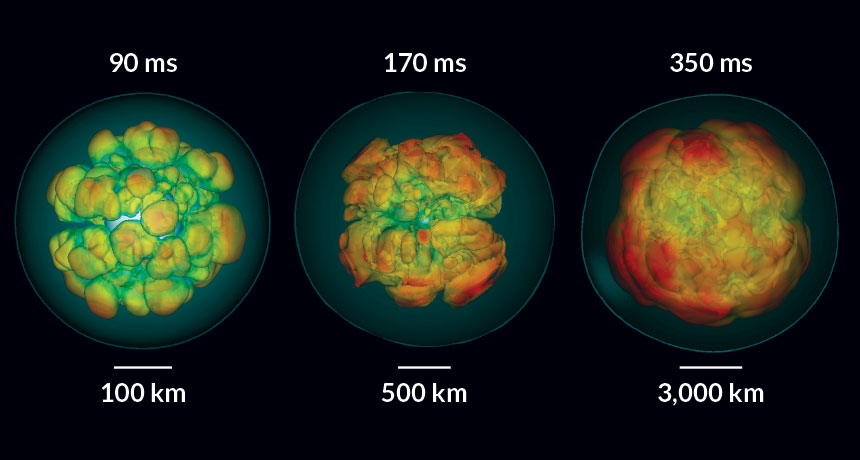When a nearby star goes supernova, scientists will be ready

STELLAR SWOON A simulation of a supernova tracks the turmoil in the center of a dying star in the moments after its core collapses. The collapse creates a shock wave (blue line) that travels outward, blasting the star apart. Red colors represent material hurtling outward, blues represent inward motion. The surfaces of the lumpy shapes have equal entropy, which is related to temperature. T. MELSON, H.-T. JANKA AND A. MAREK/ASTROPHYS. J. LETT. 2015
By Emily Conover
FEBRUARY 8, 2017
Almost every night that the constellation Orion is visible, physicist Mark Vagins steps outside to peer at a reddish star at the right shoulder of the mythical figure. “You can see the color of Betelgeuse with the naked eye. It’s very striking, this red, red star,” he says. “It may not be in my lifetime, but one of these days, that star is going to explode.”
With a radius about 900 times that of the sun, Betelgeuse is a monstrous star that is nearing its end. Eventually, it will no longer be able to support its own weight, and its core will collapse. A shock wave from that collapse will speed outward, violently expelling the star’s outer layers in a massive explosion known as a supernova. When Betelgeuse detonates, its cosmic kaboom will create a light show brighter than the full moon, visible even during the daytime. It could happen tomorrow, or a million years from now.
See full text